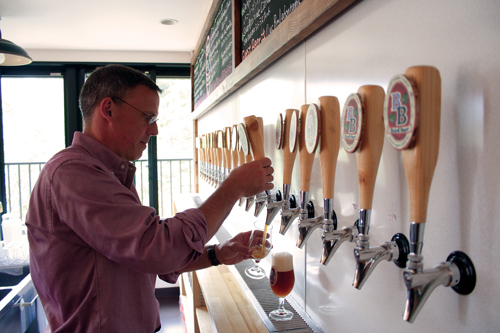
Baird Brewing is poised to become the largest craft brewery in Japan. Many people already consider it the best. It’s an easy assertion to make.
Few breweries in Japan produce such high quality beer so consistently. And certainly no other brewery pushes out more variety. Stop into any of Baird’s five taprooms and it seems there is some new seasonal selection every week. No doubt, few craft breweries in Japan have seen as much business growth, though Baird is by no means rich, as president and founder Bryan Baird frequently proclaims.
That may change with the recent opening of their enormous, beautiful new brewery in the rolling hills of rural Shuzenji, Shizuoka. A single batch on their largest system there is 6000 liters—that’s the minimum amount that a brewery with a happoshu (beer with additives) license has to brew in a single year. And Baird Brewing is now doing it three to four times a week. The brewery has the potential to scale up to 6000 kiloliters a year, which is more than twice the size of the current largest craft breweries in Japan. At that size and level of quality, Baird is likely going to change the state of craft beer in Japan, and probably nearby countries importing them.
None of this was the result of luck or magic or big money. Bryan’s vision and determination counted for much. I first visited Baird Brewing in 2001, a few months after he and his wife Sayuri had launched. Bryan was brewing on a mere 30-liter system, cranking out brew after brew at an exhausting pace, but also sending his learning curve skyward. Money was so tight back then that I remember seeing Sayuri crying one night, wondering how they would ever get by.
Bryan is no slouch when it comes to finances and had a business plan in place that helped them move from those dire early days to where the company is now. An avid adherent of Warren Buffet, the famous billionaire investor and philanthropist in America, Bryan studied political economy in college, then Japanese studies and international economics in graduate school. He knew he would need capital to properly drive his business plan and turned to investors. Contrary to assumption and rumor, the investment capital Bryan and Sayuri elicited from friends and family over the years was not huge, but rather modest commitments of money that any frugal, middle-class professional could afford. Bryan and Sayuri have always had majority control of the company. At the new brewery’s inauguration before opening to the public, Bryan acknowledged to those assembled—local politicians, some investors and industry figures involved in the brewery’s construction—the importance of investment capital.
Still, years lean on cash define most of Baird Brewing’s history. When you see the almost primitive 30-liter system that now adorns the entrance to the new brewery’s taproom, you have to marvel at how far the Baird team has come. Naturally, the narrative comes back to beer and its quality. Without that, no amount of investment matters.
“There was never any Eureka moment for me,” relates Bryan. “The more that time passes, the less clear the answer as to when I actually fell in love with craft beer. It was a gradual appreciation. When I graduated from college in 1989, craft beer hadn’t really taken off yet in America. I had been captivated by Japan because of a modern Japanese history course I took, so right out of college, I taught English for three years in Osaka.”
Bryan returned to America after that stint to attend graduate school at the prestigious Johns Hopkins University in Washington D.C. There, he met John Chesen who is now the managing director of Baird Brewing. According to Bryan, the two frequently went to the legendary Brickskeller, which was once listed in the Guinness Book of World Records as having the largest selection of commercially available beers, at over 1000.
“As I was graduating, Japan was deregulating the beer industry so I thought it would be an interesting time to return. I wasn’t just interested in craft beer but craft culture. Japanese have always been very good at it. Small-scale artisanal beer making had an immediate appeal to me.”
Bryan returned to Japan to work as a salaryman, but was following the development of craft beer very closely. He and Sayuri, whom he had met in DC, both liked beer and, realizing that he didn’t want to be a salaryman in Tokyo, Bryan decided that he needed more knowledge about beer to enter the industry successfully.
In 1997, as the craft beer industry in Japan was starting to show cracks because of widespread poor quality, Bryan returned to the U.S. to take a 3-month brewing and engineering course through the American Brewers Guild. Thereafter, he apprenticed with Red Hook in the Northwest.
“My desire was always to come back and brew in Japan.”
The dream was deferred. When he returned later in 1997, it was as an employee of an equipment manufacturer for brewing equipment. His job was to educate brewers and sell the equipment. His first assignment was to a brewpub in Numazu.
“I didn’t believe in the way my company sold equipment or the way they brewed beer. I quit and looked into other brewing supply jobs, but I ultimately wanted to brew. Sayuri and I were doing translation work on the side to make more money, but I realized that nobody was going to make the beer I wanted to make. I decided that we either start our own brewery or that I go back to Tokyo to become a salaryman.”
Bryan bought a small homebrewing system—the 30-liter one in the entrance—then spent the next year and a half home brewing on his balcony and writing a business plan. To guide him in that plan, he read every annual report that Warren Buffet had written.
Reminiscing over those days, Bryan suddenly exclaims, “If I had known it was going to take this long and this much hard work, I probably wouldn’t have started. This is why passion for beer is so important. Everything is so much harder than you think. But if you are doing what you love, you won’t give up. You don’t fail and go do something you don’t want to do. When we hire people, we look into their eyes and ask, ‘Do they care?’ At the end of the day, I do want to make money. I have four kids. I put my life into this. But if you work with honesty and integrity and have a long-term plan, you will succeed.”
Bryan’s original business plan was a 200-page document. He visited several friends over the next few months to raise the ¥10 million to get his plan rolling. He and Sayuri began talking to the tax department in 1999 and established their company in March of 2000. They opened the Fishmarket Taproom in July and the process of approval, Bryan claims, accelerated after that. He received his brewing license in December and debuted their first beers in 2001. It was hardly an overnight success.
“The first two years were very difficult and very slow because the local market never really cared about us. But mid to long-term, Numazu seemed like a good location. The water was good. Distribution was good because of its proximity to Tokyo. Costs were lower.”
In the latter half of their second year, they landed their first outside accounts. Kobayashi of Copa in northern Yokohama was the first to discover them. Then Aoki of Popeye. John Gauntner, the world’s most respected sake expert, and Robert Yellin, owner of the eponymous Japanese ceramic art gallery that was then located in Numazu, introduced Baird Beer to Takara, in Tokyo, where they had been doing sake pairing dinners together.
By the end of 2002, they were able to purchase a larger 2.5 hectoliter system that fit in the room beneath the Fishmarket Taproom.
Bryan admits, “I was still losing money, but my partners believed in me and continued to invest. I was also adding my own money. It would have been easier to raise money if I had been in Tokyo, but I was in Numazu.”
In that second year, a buzz about the brewery had begun in the craft beer enthusiast world. Most of the guests to the Taproom were traveling down from Tokyo. A rock band of Americans and Canadians called Code began to play live shows there, packing the place (at least one band member and some of those early guests later became investors). Accounts in Tokyo multiplied and things steadily grew from there. Getting that 2.5 hectoliter system to fill demand had been a turning point.
“Amazingly, I’ve only had to dump two small batches in 14 years, only because they didn’t secondary ferment. Our main beer portfolio evolved, though the only beers that we still have from those early days are the Kurofune Porter and Teikoku IPA. I love Anchor Steam and thought our Baysteam Beer, modeled after it, would be big, but it was hard to brew on a small system and that evolved into our Red Rose Amber Ale. Our Fisherman’s Wheat Ale became a Wheat Pale Ale when I made it hoppier, but then I started making single-hop pale ales from that, and eventually our Rising Sun Pale Ale was born. I basically followed what I liked.”
The next big leap for the Bairds was their first taproom in Tokyo, the Nakameguro Taproom. They were required to manage people, but not directly. It was an extremely difficult challenge and, Bryan admits, their biggest challenge after getting the original brewery running.
“Taprooms were an integral part of our plan from the beginning. I thought we would be a good company if we had our hand in every level of the market. We needed to have a showroom to sell directly to people.”
As that continued to drive demand for Baird Beer, they built a larger brewery in Numazu, just a few blocks from the Fishmarket Taproom, in late 2005 and began brewing in 2006. The seemingly omnipresent Hori Teruya of Laff helped broker and commission the brewery with Bryan. Accounts increased nationwide, more taprooms followed—in Harajuku, then Bashamichi, Yokohama—and demand soared. During that rapid growth phase, and partially helping to drive it, Baird Brewing won three gold medals at the World Beer Cup in 2010. Some insiders whispered that Baird was shortlisted for Small Brewing Company of the year.
With four Taprooms, hundreds of accounts across Japan and a fledgling export program, the little brewery in Numazu was strained to capacity. It was clear the new brewery had to be built. And soon.
When I arrive at the new brewery, everyone is involved in some kind of manual labor. Naruoka, the manager who rotates among the taprooms, and Joon Ou, the executive chef, are chopping wood between the brewery and the nearby river. Taguchi Shohei, former head brewer at YoHo Brewing and now an assistant brewer at Baird, is moving kegs with other brewery staff. Inside, Bryan is sweating through his sharp business clothes as he and Chris Poel, the head brewer, move heavy tables through the brewery. Chris Madere is preparing the brewery taproom for the night’s festivities. From the deck outside the taproom, you can see some young hop fields growing as well as an area for camping near the river—the property was formerly a campground. Old friends like Hori and Yellin start arriving.
Touring the brewery is an excitement in itself. It has three brew houses of varying capacity, which will enable a dazzling array of brews for the future. Dry-hopping machines are stationed on the brewery floor. Bryan takes me into what will be his dedicated lab and points out one of his new hires down on the floor, a young scientist who, like others doing necessary manual labor, is working a packaging machine. In one of the several offices, we run into John Chesen, looking sleepless and ravaged from the months of stress from building the brewery (and from often acting as the interface between Bryan’s passionate explosions and company staff). The overall feeling in walking through the beautifully designed place is that craft beer in Japan is starting a new chapter.
A few nights later, I run into Bryan randomly on the streets in Yokohama. We go for a few drinks at Bashamichi Taproom afterhours and talk about past, present and future. Bryan frequently cites those he most respects in the industry: Charlie Papazian, homebrewing pioneer and president of the Brewers Association of America; Michael Jackson, the famous beer writer; Fritz Maytag who revived Anchor Steam and launched the craft beer movement in America; and Ken Grossman, the founder and president of Sierra Nevada. Bryan reveals that he is trying to model himself after Grossman in Japan, never compromising on quality.
He goes on to say, “The problem with craft beer in Japan is the lack of entrepreneurship. There are too few individuals with dreams that aren’t afraid to take risks. There are too many company presidents dictating what should be brewed and how. There are not enough brewer-owners.”
And there is not enough money. Or time. Or good staff. Or acceptance of craft beer. Yet Bryan has still achieved his dream and is already looking ahead.
Out on the street, he says, “Let’s change craft beer in Japan. Let’s raise awareness and educate others. Let’s make this better.”
Sounds like a challenge for everyone. We’re ready.
by Ry Beville
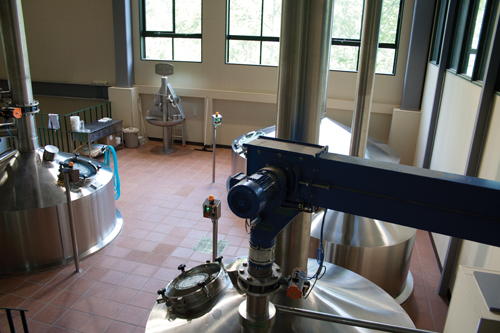
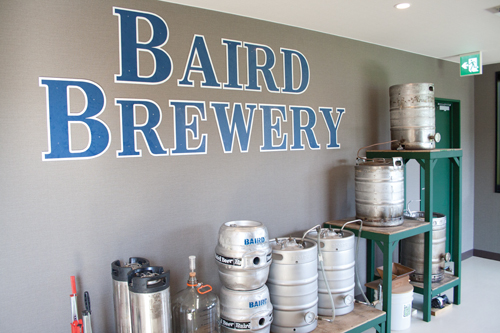
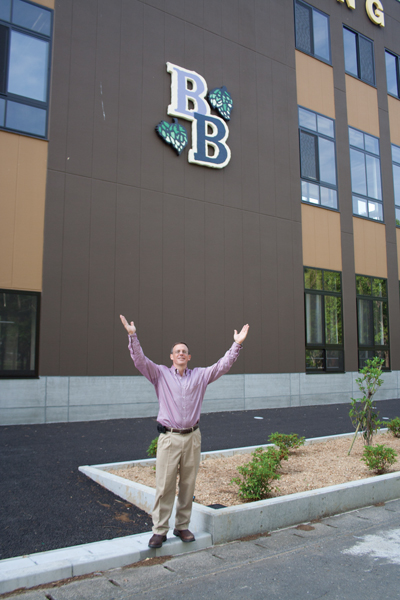
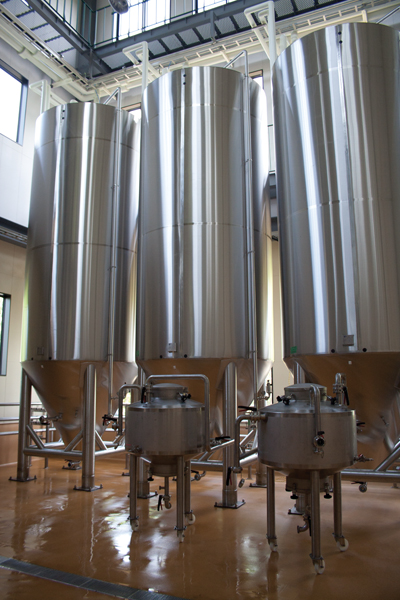
This article was published in Japan Beer Times # () and is among the limited content available online. Order your copy through our online shop or download the digital version from the iTunes store to access the full contents of this issue.



